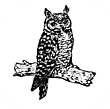|
- Home
- About
- Reist Sanctuary
- Sanctuary Ecology
Birds
The birds found in the Reist Sanctuary are characteristic of eastern New York woodlands. Download a Bird List (pdf). The base list was prepared by Ray Perry with additions by other members of the Club.
Vegetation
An overview of the flora of the sanctuary has been produced by personnel of the New York Natural Heritage Program and the Thursday Naturalists working in cooperation with the members of the Hudson-Mohawk Bird Club and Protect the Adirondacks. Download a copy of the Reist Flora (pdf).
The Sanctuary's Setting
The Reist Sanctuary is located in the Town of Niskayuna, Schenectady County, New York. It is encircled by roads and almost entirely developed land. The relief is gentle ranging from a high point of 472 feet above sea level in the northwest corner to a low of 378 feet in the southwest – a range of nearly one-hundred feet. It is traversed by a sewer line running east-west. This easement is maintained free of trees and brush by the Town of Niskayuna and is known as the Hidden River Trail. This strip of disturbed land provides some, not always desirable, ecological diversity to the preserve.
Settlement, forest clearing, grazing and cultivation began in the 1600s with the Pearse Family being among the early settlers. The Pearse Homestead, restored by Paul Schaefer in 1934, survives to the southeast of the Sanctuary on Saint David’s Lane. Rectangular pits suggest that the remains of other early buildings exist on the Sanctuary but these are yet to be studied. Two red pine plantations were established by Dr. Henry Reist and Paul Schaefer in the mid-1930s and still survive adding further diversity to the Sanctuary. Acquisition of the Pearse Farm by Dr. Henry Reist and their assignment to the Hudson-Mohawk Bird Club are detailed in the Reist biography.
The stratigraphic sequence begins with surficial sands, probably of aeolian origin, thus suggesting that the mounds of the northern sector were once sand dunes. Rounded stones can be found in a few rock walls and shallow stream courses in the Sanctuary. These heavy and well tested rocks have been brought south from parental sites in the Adirondacks and elsewhere by glaciers or floating ice. Interesting features of the Sanctuary are the vernal pools in the northeast sector and the forested wetlands or swamps in the southern part. The physiological adaptations of plants to wetland soils and the ecological relationships of the swamp community are ideal topics for teaching, study and research.
Beneath the sands there may be a varved bed of bluish-gray glacial lake clay. Beneath these proposed clay beds are 2,000 feet of Middle to Late Ordovician strata of the Snake Hill Formation, some 450 million years old. These are composed of alternating horizontal layers of shale and more durable turbidite, the latter a fine-grained, light gray stone resulting from deep sea deposits laid down by turbidity currents. These are caused by sediments slumping from the coastal slopes and entraining much water to flow at great speed (40 mph) into the oceanic depths. The source of these sediments is the ancient islands once emerging to the east. There are no exposures of the shale or turbidite strata on the Sanctuary although pieces of the turbidite - called greywacke - can be occasionally found.
